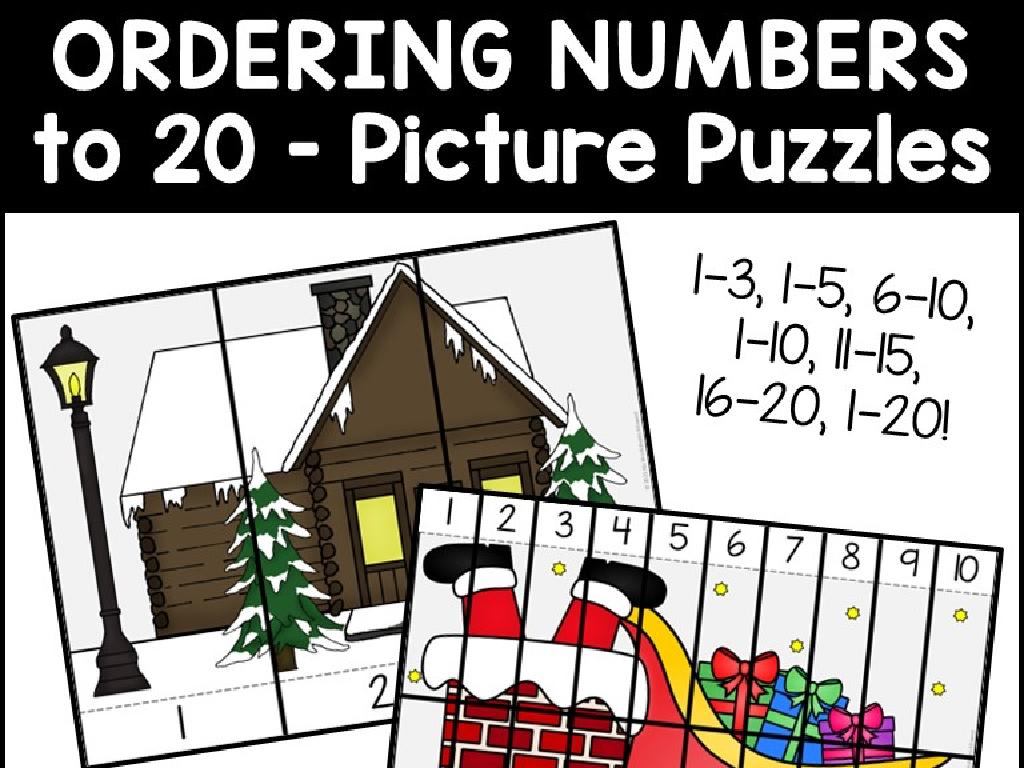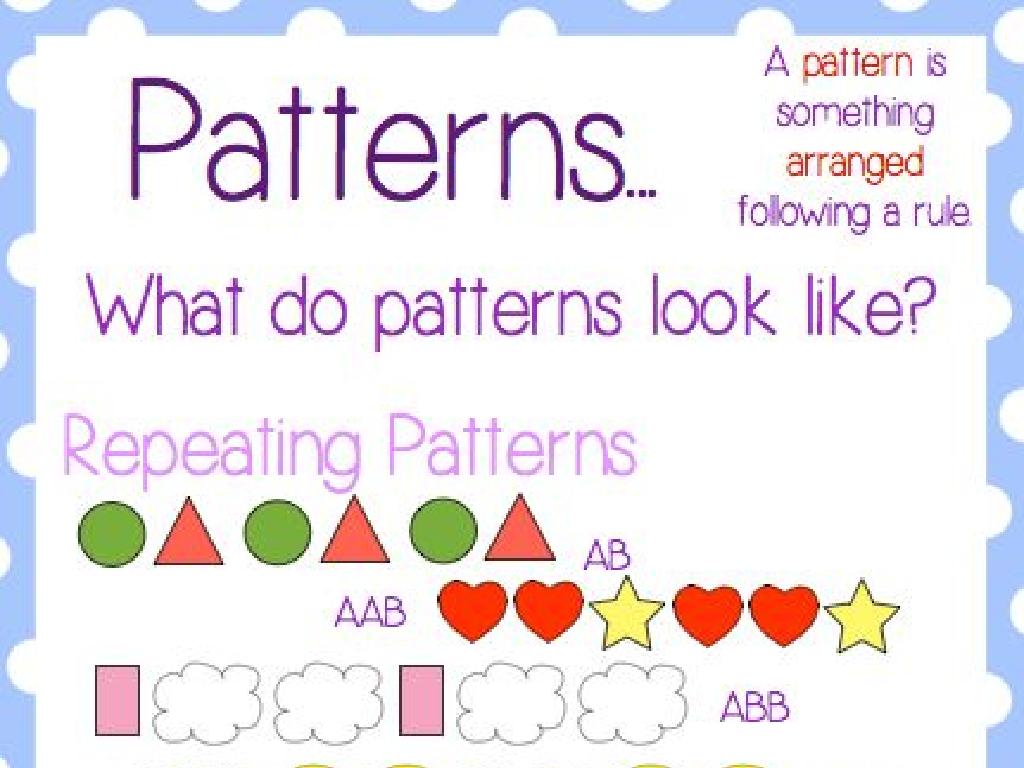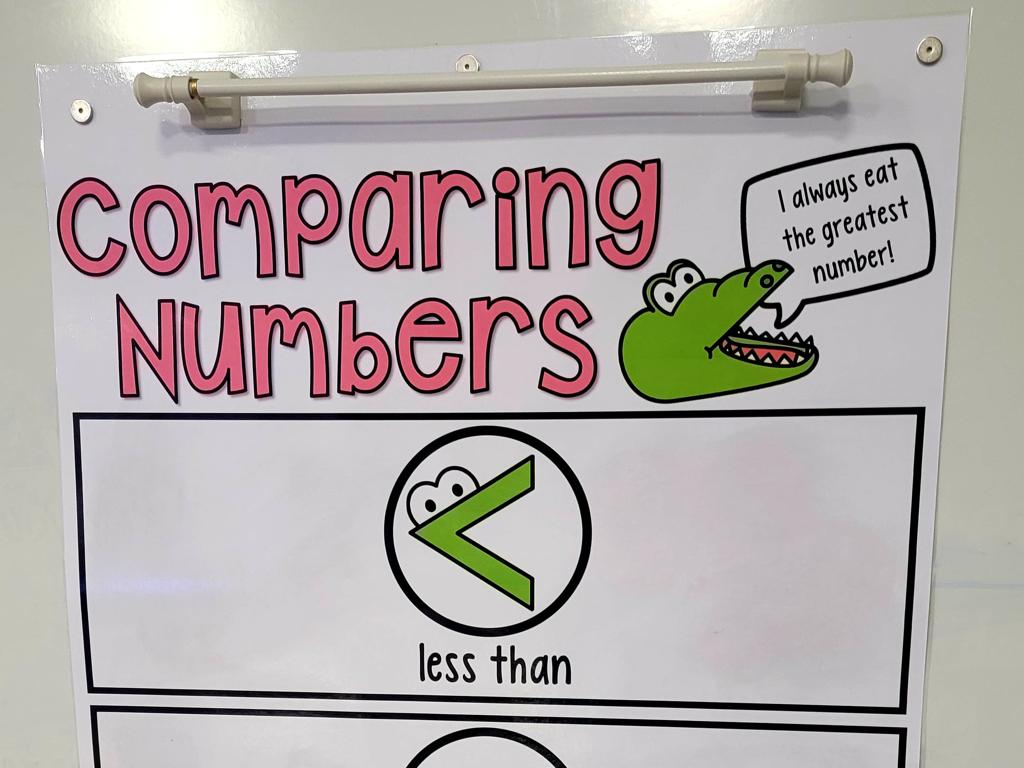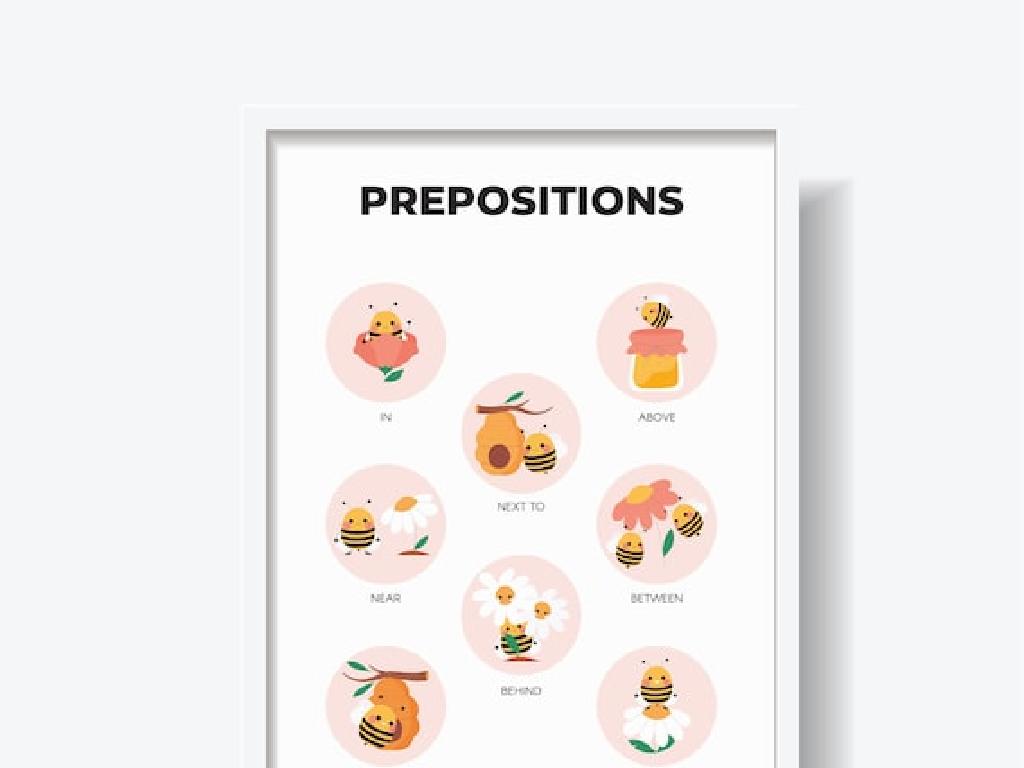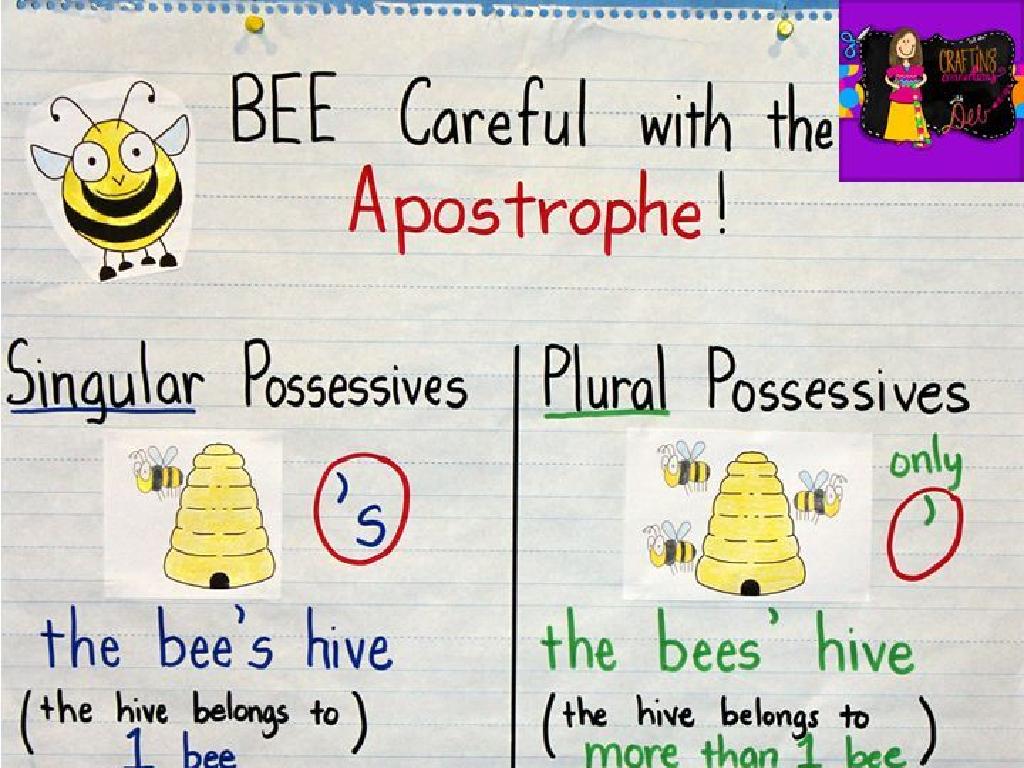Are There The Same Number?
Subject: Math
Grade: Kindergarten
Topic: Comparing Up To 5
Please LOG IN to download the presentation. Access is available to registered users only.
View More Content
Are There the Same Number?
– Welcome to our number game!
– Learn to compare numbers up to 5
– Counting items together
– We’ll count objects like blocks or apples
– Discovering equal amounts
– We’ll see when two groups have the same number
|
This slide introduces the concept of comparing quantities to Kindergarten students. The focus is on understanding whether two groups contain the same number of items when comparing up to 5. Start the lesson with a warm welcome and an explanation that math can be fun, especially when it’s like playing a game. Engage the students by counting items together in class, such as blocks, apples, or other classroom materials. Encourage them to participate actively by counting out loud and using their fingers to represent numbers. The goal is for students to visually and practically understand the concept of ‘the same number’ through interactive activities. Prepare several sets of items in groups up to 5 and have students compare different sets to find pairs with equal amounts. This hands-on experience will help solidify their understanding of comparison and equality in numbers.
Are There the Same Number?
– Understanding ‘the same number’
– ‘The same number’ means equal items in groups
– Counting to compare groups
– Let’s count items in two groups to see if they are the same
– Practice counting with me
– We’ll count out loud together to practice
– Do both groups match?
– After counting, we check if both groups have the same amount
|
This slide introduces the concept of equality in numbers to Kindergarten students. Begin by explaining that ‘the same number’ means that there are an equal number of items in each group. Demonstrate this by counting items in two different groups and comparing the totals to see if they match. Engage the students by counting together as a class, which helps them practice their counting skills and reinforces the concept of number equality. After counting, ask the students to observe and confirm if both groups have the same number of items. This interactive approach will help students understand the basic concept of comparing quantities.
Counting Fun: Do Groups Match?
– Observe objects on screen
– Count each group together
– We’ll count aloud as a class
– Compare numbers in groups
– Do the groups have equal numbers?
– Same or different amounts?
|
This slide is designed to be interactive and engaging for Kindergarten students. Begin by showing objects on the screen in two distinct groups. Encourage the students to look carefully at the objects presented. Then, lead the class in counting the objects in each group out loud, ensuring that every student participates and practices their counting skills. After counting, ask the class to compare the two groups and determine if they have the same number of objects. This activity helps students understand the concept of comparing quantities and introduces them to the basic idea of equality and inequality in numbers. For the activity, prepare different sets of objects to count and compare, such as stickers, blocks, or pictures, and consider using real objects in the classroom for a hands-on experience.
Matching Game: Same Number of Items
– Find two groups with equal numbers
– Look for groups with the same amount of items
– Point to the matching groups
– Use your finger to show which ones are the same
– Celebrate finding matches
– Praise for identifying equal groups
|
This slide introduces a matching game to help Kindergarten students understand the concept of equal numbers. The activity is designed to be interactive, with students actively searching for and pointing out groups with the same number of items. Encourage students to count items in each group carefully and to check their work by recounting if necessary. Celebrate correct matches to reinforce positive learning experiences. For the activity, prepare several sets of item groups, ensuring some have equal numbers and some do not. This will help students practice comparing quantities up to 5. Possible variations of the activity could include using different objects, such as blocks, stickers, or drawings, to keep the game engaging.
Comparing Numbers with Our Fingers
– Use fingers to show numbers
– Match fingers to objects shown
– If you see 3 apples, show 3 fingers.
– Compare fingers with a friend
– Hold up your hands together, are they the same?
– Discuss if numbers are the same
|
This slide is designed to engage Kindergarten students in a hands-on activity to understand the concept of comparing numbers up to 5. By using their fingers, students can physically represent and compare quantities, which helps to solidify their understanding of numbers and comparison. The teacher should display images of objects in varying quantities on the screen and guide the students to show the corresponding number of fingers. Then, students should pair up to compare their fingers with each other to see if they have the same number. This activity promotes peer interaction and discussion about the concept of ‘the same number’. The teacher should circulate the room to assist and encourage students, ensuring they understand the concept of matching and comparing quantities.
Are These the Same?
– Observe two groups of items
– Count items in each group
– Do both groups have the same number?
– Use counting to compare the groups
– Decide if they are the same or different
– Use words ‘same’ or ‘different’ to describe
|
This slide is aimed at helping Kindergarten students understand the concept of comparing quantities up to 5. Start by showing them two distinct groups of items. Encourage the students to count the items in each group carefully. After counting, ask the students to compare the numbers and determine if both groups have the same number of items or different quantities. Reinforce the vocabulary by using the words ‘same’ and ‘different’ and encourage the students to use these words in their explanation. This activity will help develop their counting skills and their ability to compare sets of objects. For the activity, you can use items like blocks, stickers, or fruits. Make sure to have several examples ready, and consider pairing students to promote collaborative learning.
Class Activity: Matching Number Pairs
– Receive cards with numbers and pictures
– Find a partner with matching numbers
– Compare the number of items on cards
– Does your card have the same amount as your friend’s?
– Discuss findings with the class
– Share what you and your friend discovered!
|
In this activity, students will engage in a hands-on learning experience to understand the concept of ‘the same number.’ Distribute cards with various numbers (up to 5) and corresponding pictures to the students. Instruct them to walk around the classroom and find a classmate with a card that has the same number of items. Once they find a match, they should sit down together and compare their cards to confirm. Afterward, facilitate a discussion where each pair shares their findings with the class. This will help reinforce the concept of quantity comparison and number recognition. Possible variations of the activity could include matching different sets of items with the same quantity, using cards with different colors or shapes, or even creating a memory game where students find pairs by flipping cards over.
Review Time: Same Number Comparison
– Recap: Learning about numbers
– Comparing two groups
– We look at each group and count carefully.
– ‘Same number’ with fingers
– Use fingers to represent numbers up to 5.
– Show and tell with examples
– Bring items to class to demonstrate.
|
This slide is meant to review the key concepts from today’s lesson on comparing numbers up to 5. Start by asking the students what they learned about numbers to refresh their memory. Then, move on to the concept of comparing two groups to determine if they have the same number of items. Encourage the children to use their fingers to show numbers up to 5, which helps them visualize the concept of ‘the same number.’ Finally, prepare a show and tell activity where students can bring items from home to demonstrate their understanding of the concept by grouping items into two groups with the same number. This interactive approach reinforces learning through physical representation and peer learning.
Goodbye and Great Job!
– Amazing job comparing numbers
– Counting helps check number equality
– Count objects to see if groups are equal
– Practice counting at home
– Excited for more math fun next time
|
This slide is meant to wrap up the lesson on comparing numbers up to 5. Praise the students for their hard work and remind them of the importance of counting as a method to determine if two groups have the same number of items. Encourage them to practice counting at home with toys or snacks to reinforce today’s lesson. Show enthusiasm about the upcoming math lessons to keep them excited about learning. Prepare a few simple counting activities for the next class to continue building their skills.

